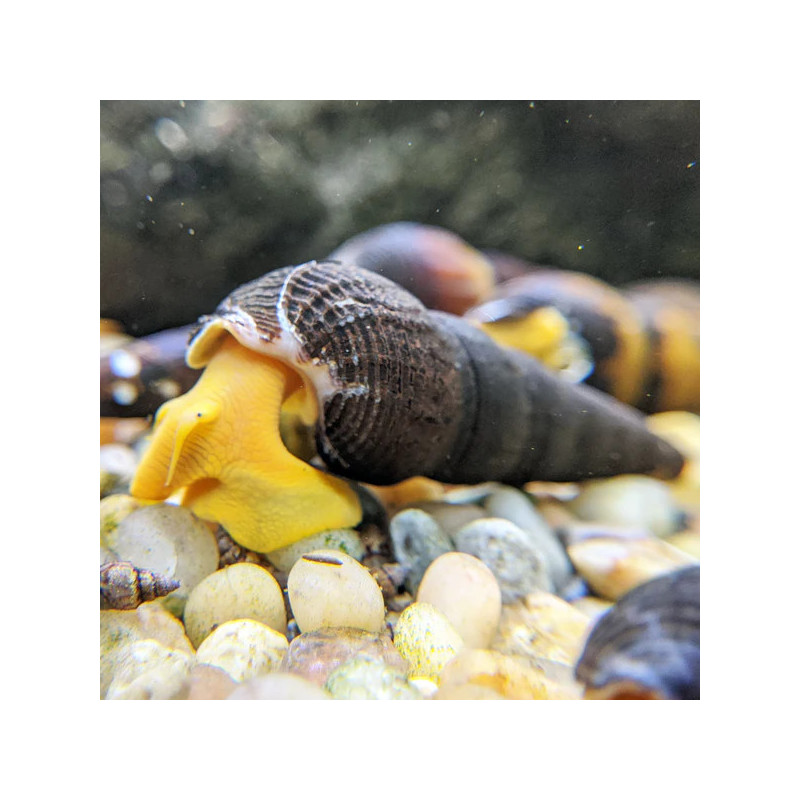Stocks Available
Red And Blue Rili Shrimp
SKU:128889
NEOCARIDINA DAVIDI
0.25-0.5 INCH

Stock Available
Introduction: • Species: Yellow Rabbit Snail • Common Names: Yellow Rabbit Snail, Rabbit Snail • Natural Habitat: Native to freshwater environments in Indonesia, particularly in the Maluku Islands, where they inhabit rivers and streams with sandy substrates and dense vegetation. Physical Characteristics: • Appearance: Characterized by a distinctively elongated, spiral shell that is typically yellow with darker mottling. The shell can reach an impressive size, showcasing a unique and attractive shape. • Size: Grows up to 3 inches (7.5 cm) in length. • Lifespan: Can live for several years, often around 3 to 5 years under proper care. Habitat Requirements: • Tank Size: A minimum of 10 gallons is recommended for a small group, allowing ample space for movement and grazing. • Water Conditions: o Temperature: Prefers water temperatures between 72-82°F (22-28°C). o pH: Thrives in slightly acidic to neutral pH levels, ideally between 6.5 and 7.5. • Aquascaping: Requires soft substrates for burrowing, along with hiding spots created by plants, rocks, and driftwood to mimic their natural environment. Diet: • Primary Diet: Herbivorous, feeding primarily on algae, detritus, and decaying plant matter in their habitat. • Supplemental Feeding: Offer blanched vegetables, such as zucchini and spinach, along with high-quality sinking pellets designed for herbivorous snails. • Feeding Frequency: Provide small portions once or twice daily to ensure they receive adequate nutrition without overfeeding. Compatibility: • Temperament: Generally peaceful and non-aggressive, making them suitable for community tanks. • Suitable Tank Mates: Compatible with other peaceful fish, invertebrates, and plants. • Incompatibilities: Avoid keeping with aggressive fish that might harass or prey on the snails. Care Level: • Difficulty: Considered easy to care for, requiring regular maintenance and stable water conditions. • Health Monitoring: Observe for signs of stress or shell erosion, which can indicate poor water quality or dietary deficiencies. Breeding: • Breeding in Captivity: Breeding can be challenging; they reproduce slowly, laying eggs that develop into juvenile snails over time. • Spawning: Requires stable conditions, and care should be taken to provide adequate food for the young snails. Economic Considerations: • Market Demand: Gaining popularity among aquarium enthusiasts due to their unique appearance and beneficial algae-eating habits. • Wholesale/Retail Pricing: Typically available at moderate prices, influenced by demand and availability. Sustainability and Conservation: • Wild Population: Populations are stable, but habitat loss and pollution pose potential threats. • Aquaculture Efforts: Captive breeding can help reduce the impact on wild populations. • Regulations: Compliance with local regulations is important for sustainable trade practices. Conclusion: The Yellow Rabbit Snail is a fascinating addition to freshwater aquariums, appreciated for its unique shell and gentle demeanor. With proper care, they contribute positively to the tank ecosystem while providing visual interest, making them a great choice for both novice and experienced aquarists.
Data sheet
16 other products in the same category:
Customers who bought this product also bought: